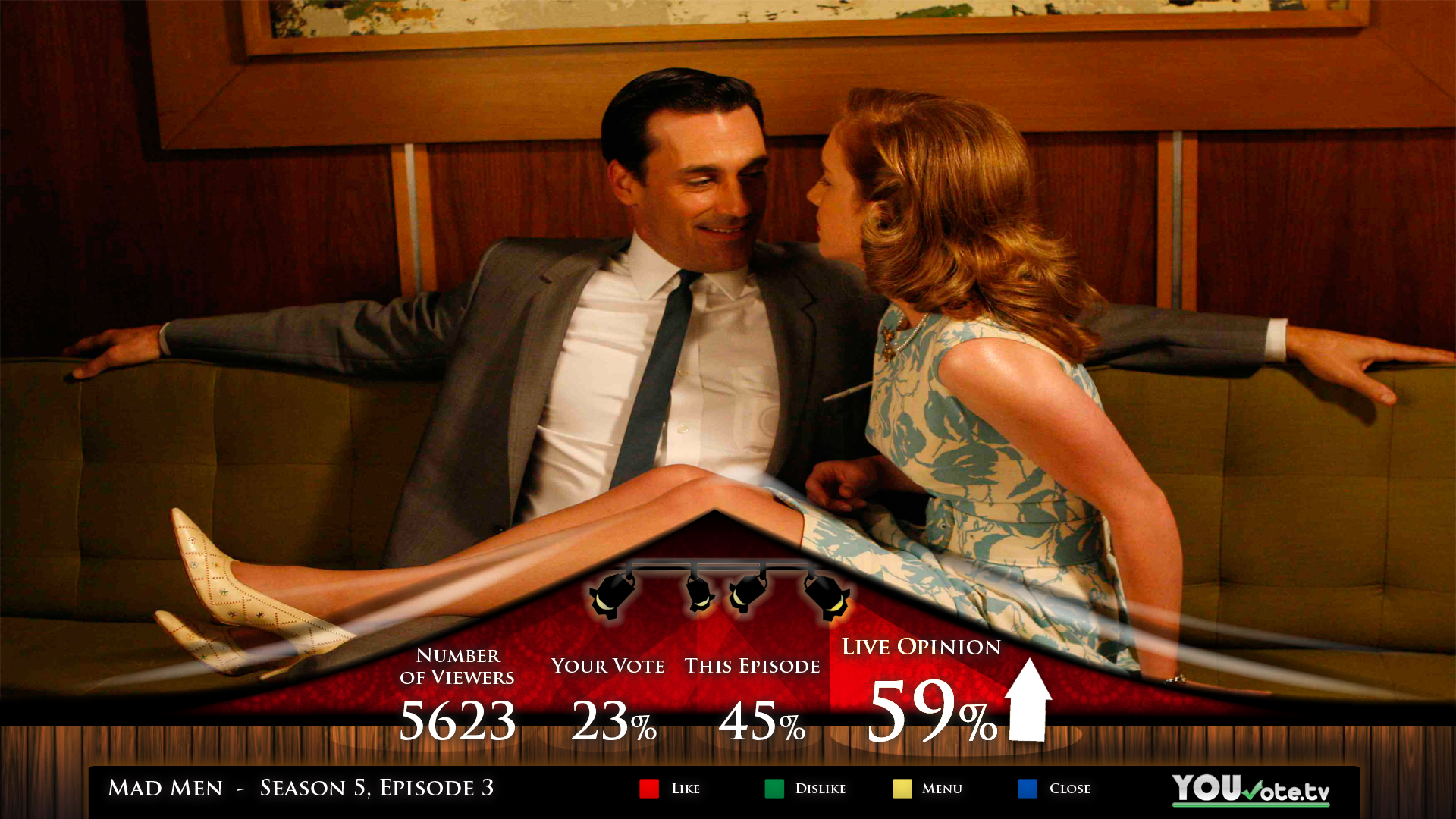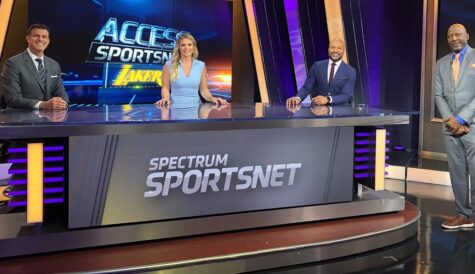
After more than 40 years of operation, DTVE is closing its doors and our website will no longer be updated daily. Thank you for all of your support.
Feature: Planet of the Apps
Connected TV is this year’s big trend. But the long-term implications for TV manufacturers, content providers and pay TV operator are far from clear. Stuart Thomson reports.
If the recent Consumer Electronics Show in Las Vegas is a guide, TVs that connect to the web – or smart TV, to give the industry-preferred name – is this year’s big thing. Major TV manufacturers all used CES to highlight internet connectivity as the feature – or the gateway to features – that will help them shift units over the next 12 months. Samsung has revealed that its aim is to ship 25 million internet-connected TVs out of a total of 50 million flatscreen units this year.
But what does ‘smart TV’ really mean and will the TV manufacturers’ approach, based on the sale of flatscreen TV with vertically integrated platforms, deliver results?
According to Informa Telecoms & Media, publisher of Digital TV Europe, connected TVs numbered 82 million units out of total 2.276 billion TVs globally in 2011. This is expected to rise to 892 million units out of a global total of 2.632 billion TVs by 2016 – a significant base, but it leaves unmeasured how many devices are being used by their buyers for anything other than watching linear TV.
Some industry players are critical of the approach taken by suppliers of connected TVs – namely the app-based model, where the TV acts as a gateway to internet services via apps that can be installed as standard or downloadedt, on the model adopted by the smartphone market. “We think there is something of a question mark over connected TVs,” says Simon Woodward, CEO of interactive TV middleware provider ANT.
Woodward believes that an approach that “litters the screen with apps” will find little favour with people. For Woodward, watching TV is typically a communal rather than an individual experience, whereas the app-based model has more relevance for individual-centred devices like phones. In his critique of the connected TV model, ANT’s Woodward also points to the low rate at which people who buy internet-capable TVs are actually connecting them to the web.
Not everyone agrees with this critique. Thierry Fautier, senior director of convergence solutions at TV technology specialist Harmonic, argues that the channel surfer of today could easily become the app surfer of tomorrow. Existing UIs are often boring and static, says Fautier, and a more web-savvy audience will be happy to view the TV experience as a variant of the mobile and online one.
Given global scale, a relatively low connection rate might in any case still produce a big enough market to attract content providers and advertisers. Michael Lantz, CEO of app-focused interactive TV specialist Accedo Broadband – and European president of a new Connected TV Marketing Association – says that the market for connected apps has now reached sufficient scale, at least in the US, to enable an advertising-based business case: “Traffic – especially in the US – is high enough to launch an app and fund it from advertising.”
For Dan Saunders, director of content services at Samsung Electronics Europe, progress to date has in any case been more than satisfactory. He says that Samsung – recognised as the leader amongst TV manufacturers in the space – has had 20 million apps downloaded globally. “The absolute numbers are not that interesting but if you look at that against time spent in terms of engagement with the idea of the smart TV platform you can see the shape of a growth curve that’s very exciting,” he says, adding that the smart TV proposition is now also central to Samsung’s marketing of TVs.
“One thing that’s obvious is that video-based services are a key component of why people use smart TV. The video-based services – including local video services – are the ones that attract most user engagement,” says Saunders. “If you look at interactive services as a percentage of overall use, it’s predominantly non-linear services from broadcasters and VOD services from content-based VOD providers and telcos.” He says that niche content, such as a Berlin Philharmonic app, which makes concert videos available online, has also proved popular. The use of social networking features has also proved to be an attractive part of the TV experience, he says. Viewers use the TV to check Facebook status updates, without regarding this as their main ‘social’ screen.
Range of devices
The range of internet connected TVs is expanding and the price is falling. Milya Timergaleyeva, vice-president of marketing at connected TV software provider Oregan Networks, points out that the connected TV market is now at something of a turning point: whereas the first wave of players including Samsung, LG and Panasonic were able to make headway through tight control of the silicon platforms on which their hardware was based, the availability of powerful low-cost solutions from Chinese and Taiwanese silicon vendors means that the market could open up to lower cost TV manufacturers. At the same time technology players including Intel and Adobe have withdrawn, because the kind of margin they seek is simply no longer available.
Video and other TV services can of course be delivered over the internet to a wide range of connected devices – not only TVs but games consoles, media players and hybrid set-top boxes can be used to provide access via the TV to video-on-demand and other web-based interactive services. Not all of these devices will make services available in the same way as the app model adopted by TV manufacturers. For ANT’s Woodward, a more significant market for connected devices will be that deployed in support of broadcast services, including YouView to complement digital-terrestrial TV in the UK, and HbbTV services (the hybrid broadcast-broadband standard adopted by a number of European broadcasters to enable the scalable delivery of internet-based services in support of digital broadcast TV) around Europe. “These have more to do with a cohesive TV experience rather than ‘either TV or apps’,” he says. In the latter case, online services are integrated with the EPG that gives access to mainstream broadcast services.
HbbTV, says Woodward, enables app developers to write something once for distribution across multiple devices and territories. For content providers, the ideal solution is to be able to deliver a service to a device that the consumer already has in the home, rather than force him to buy a new box. It could be argued that consumers are unlikely to be persuaded to buy a box that can only be used for OTT services. Woodward believes, in any case, that standards-based systems will win out. “Connected TV as it stands today is not standards-based but in the long term that just can’t scale,” he says.
Fautier agrees that lack of standardisation in connected TV space is a major stumbling block to the development of the market. “The TV market is clearly moving in a direction where each major content provider will provide its own app on a connected TV in a standard way like planned in Europe with HbbTV 1.5 or per TV manufacturer with a limited set of content like in US,” says Fautier. “At CES this year, connected TVs were showing ABC, CBS, NBC, Fox and ESPN apps on the same connected TV. We are moving from a channel surfing to an app surfing world. Connected TV is a fragmented market with content providers forced to create content for each TV manufacturer and consumers being able to access only limited content on each TV they buy. In France, you need to buy six different TVs to access all the possible OTT content. This is not a scalable business and only standards such HbbTV 1.5 will enable access to any DRM protected content on any HbbTV 1.5 TV set.”
HbbTV version 1.5 is an extension of the existing HbbTV specification that includes provision of content protection for video-on-demand and live TV services. The current spec makes no provision for the protection of video services over the internet. The extension is designed to implement a DVB Simulcrypt-type solution whereby content providers could implement their own DRMs across multiple models of TV set and other devices. The specification is currently being ratified, with France expected to deploy it in 2012. HbbTV in general is seen as providing a relatively simple way of bringing broadcast and broadband content together in a relatively seamless way.
Standards-based approach
Most of the players in the market at least pay lip service to the benefits of a standards-based approach. However, a number also point out the benefits of proprietary differentiation within a broadly standards-based market.
Accedo’s Lantz is sceptical about how much standardisation is possible for the user experience, but agrees that industry fragmentation is a barrier to entry. “It’s not really a viable solution to standardise the UI. You can’t force people to use HTML5 or Flash, and one HTML5 solution is not exactly the same as another,” he says, referring to the latest, multimedia-friendly version of the universal language for presenting content on the web (see sidebar). “In any case, the cost of doing an app for multiple platforms is not the main issue. It’s about getting video to work with multiple devices. Catch-up TV means you need to transcode on a regular basis, which is expensive.”
[icitspot id=”22466″ template=”box-story”]This is seen as possibly the single most important barrier to entry. The cost of transcoding – formatting video for the different adaptive bit-rate technologies and digital rights management platforms available – far outweighs reconfiguring apps for different manufacturers’ portals as a cost item.
Frode Hernes, vice-president responsible for TV and connected devices at software provider Opera, believes that the key problem is fragmentation. The lack of a common DRM and adaptive bit-rate format – which allows video resolution to vary to match the bandwidth available on the internet – means that it is difficult for content providers to market their services across the multitude of devices out there. The range of different devices on which connected services are available also provide widely differing levels of processing power, meaning that not every device has the power to handle all the services available. Hernes says the lack of Javascript APIs for the major adaptive bitrate formats is a significant problem.
For Harmonic’s Fautier too, these questions are critical if services are to scale. Even if a proprietary technology gains widespread adoption – such as Apple’s HLS adaptive streaming technology – the rest of the industry is still likely to lack confidence in that technology because Apple still controls the spec. The situation is analogous to the industry’s lack of confidence in the VC-1 video codec that Microsoft developed a few years ago, but which was quickly superseded by H.264. For Fautier, other problems include lack of available bandwidth for services. Fautier believes that the current norm of 720p30 video delivered over 1.5Mbps does not offer sufficient quality for display on a TV screen and that 3-5Mbps is really the minimum. Current networks are not capable of delivering video at 3-5Mbps consistently.
On adaptive bit-rate streaming, Fautier believes that the industry will consolidate around the MPEG-DASH standard. Opera’s Hernes on the other hand argues that the lateness of the standard means that many providers have already built out infrastructure based on Microsoft PlayReady or the Apple platform. On the DRM side, there is little sign of a clear winner amongst the various systems around which the market has converged. Microsoft PlayReady has been widely adopted, but Marlin remains popular with operators, while the possibility that Google will make Widevine available for free means the future development of the space is hard to predict.
Oregan’s Timergaleyeva, whose Onyx software is used by a number of mass-market TV manufacturers as well as by service providers, believes that security is a key issue that could hold up development of the market.
The multitude of DRMs that publishers need to support is problematic, she says. While the DECE/UltraViolet initiative – based on standards-based digital lockers that allow users to playback content on multiple devices – is gaining traction and could help solve problems for the consumer, it is unlikely to reduce the investment demands placed on publishers to support multiple DRMs and video formats.
Client devices
It is not only transcoding requirements and lack of clarity around DRM that could slow down development of the industry, however. Content and application developers have to format to a wide range of client devices, and the existing main players all operate vertically integrated, proprietary platforms.
“It’s not our objective to set up technology barriers,” says Samsung’s Saunders. “The SDKs that we use to build apps are based on universal standards like HTML Javascript, which supports H.264 and a wide array of DRMs. We want to market-test and understand what technologies are required.” Nevertheless, he says, a desire to differentiate, based on quality, means that the degree of commonality across platforms is likely to only go so far. “You will see more commonality as it moves forward but there is always a requirement for us to be particular about or own devices,” he says. “One ability that the app approach gives us is to build services that are optimised for our devices. There is intense competition between CE manufacturers. Part of our advantage is that we build a product so there will always be a difference.” The trick, he says, is to enable content providers to deliver services across different devices while leaving CE manufactures with space to innovate.
Other issues facing the industry include fragmentation on the content supply side as well as on the technology platforms themselves. Movie and TV rights are typically restricted by geographic exclusivity, unlike music rights. While national broadcasters have found it relatively straightforward to extend linear offerings by adding catch-up services – because they created the content in the first place – new entrants have experienced mixed fortunes in the rush for rights. Even successful providers including Netflix have experienced mixed fortunes, with content providers seeking to strike harder bargains as the over-the-top providers achieve more widespread adoption.
To stimulate the market, TV manufacturers themselves have become involved in negotiating content rights in certain cases – notably with 3D content to stimulate take-up of 3D. However, for now manufacturers have stopped short of becoming content aggregators for their own connected TV platforms. Samsung asks its partners for a revenue share based on an estimate of how well services are likely to do. “For Samsung it’s about taking responsibility for the platform that supports the product and asking content providers to take responsibility for the content,” says Saunders.
Pay TV space
If TV manufacturers do not want to take on the role of content aggregation – and therefore compete in the pay TV space – how do pay TV incumbents themselves view the growth of connected TVs and other devices?
At one level, connected TV is a threat and an opportunity at the same time. “We are seeing a model where pay TV may be forced to be an application in a walled garden,” says Matthew Huntingdon, vice-president of product marketing, OpenTV. “You can go to the Samsung app store and install a pay TV app.”
The alternative model – favoured by a number of broadcasters and pay TV operators – is to deliver services OTT to a dedicated device controlled by the service provider, enabling users to switch on their TVs and immediately find themselves in the pay TV environment. “For many the jury is still out on the effectiveness of the type of app store we’re seeing from TV manufacturers,” says Huntingdon. “There is still a lot of value in set-tops.”
Huntingdon draws an analogy to the conditional access module market, which enables buyers of TV sets to opt into pay TV. It is possible that consumer electronics firms may be willing to partner with specific pay TV services to give them a privileged position on their own portals. Pay TV providers are also interested in launching their own branded app stores.
For pay broadcasters, over-the-top is emerging as a viable distribution channel for their own services. BSkyB recently launched an OTT-only version of its pay TV service for subscribers that do not want to sign up for the full package. However, the delivery of an entire suite of pay TV services – including live as well as on-demand content – over the top has really yet to be tried.
One clear difference between established pay TV players and over-the-top connected TV services is the ability of the former to strike deals with content rights holders for live content. Connected TV players up until now at least have been restricted to on-demand – and not always in the most attractive window – while pay TV incumbents have been able to deliver a more compelling content mix to their user bases. If even Microsoft – a beneficiary of the scale of Xbox Live adoption – is unable to strike satisfactory deals for live content with rights holders, there can be little hope for smaller players.
For pay TV operators, however, the principal appeal of connected devices for now is that they could provide a cost-effective way to deliver content to multiple screens over the home network. It is also possible that much of the functionality of connected TVs could be displaced to so-called companion screen devices, particularly tablets as these become more widely adopted. Using the tablet to control the TV screen enables the viewer to avoid cluttering the big screen with a complex UI or widgets. “You can interact with a second screen in a way that you can’t on the main screen without being disruptive,” says ANT’s Woodward.
Huntingdon at OpenTV agrees. “I’m a strong believer that a lot of content discovery will move to smartphones and tablets,” he says. “For anything more than initial surfing people will revert to handhelds to find content they want to access.” Huntingdon goes so far as to argue that the companion device could come to be seen as the principal screen, with the TV relegated to second place. “We see potential that there will be second-screen inversion where that becomes the prime screen and the TV becomes the secondary screen,” he says.
The key is which device the consumer looks to as being at the heart of his relationship with the service provider. If the handheld device becomes the prime remote control, that will be where the consumer looks first. Harmonic’s Fautier sees five main uses for companion devices: as a super remote control, taking the UI off the main screen; as a second screen to watch live or VOD programmes; as a portable DVR and as an additional window for telescoping interactive ads.
The extent to which functionality can be moved from the main screen to companion devices is open to question. Not every user of connected TV features will own an iPad, and when they do they may be subject to competing demands for their use from different members of a given household. Samsung’s Saunders says that his company, which is of course a major supplier of Android tablets as well as TVs, is investigating the way customers use different devices around the home. “The question is whether the tablet is really a companion device. In many cases it’s a shared device rather than something [personal] like a smartphone,” he says. Nevertheless, Samsung expects more use of companion devices, connected to the TV via DLNA, as time goes on. The company has developed apps for tablets that allow the latter to become sophisticated remote control devices.
For pay TV providers, companion devices – like connected TVs – could be a double-edged sword. Content and pay TV providers alike are keen to extend their brands to multiple screens. In this case it is indeed possible that the pay TV service UI could become an app on a tablet – or on a connected TV or on both – as consumers come to view the two devices as complementary. Who controls the overall experience could become much less clear-cut.



